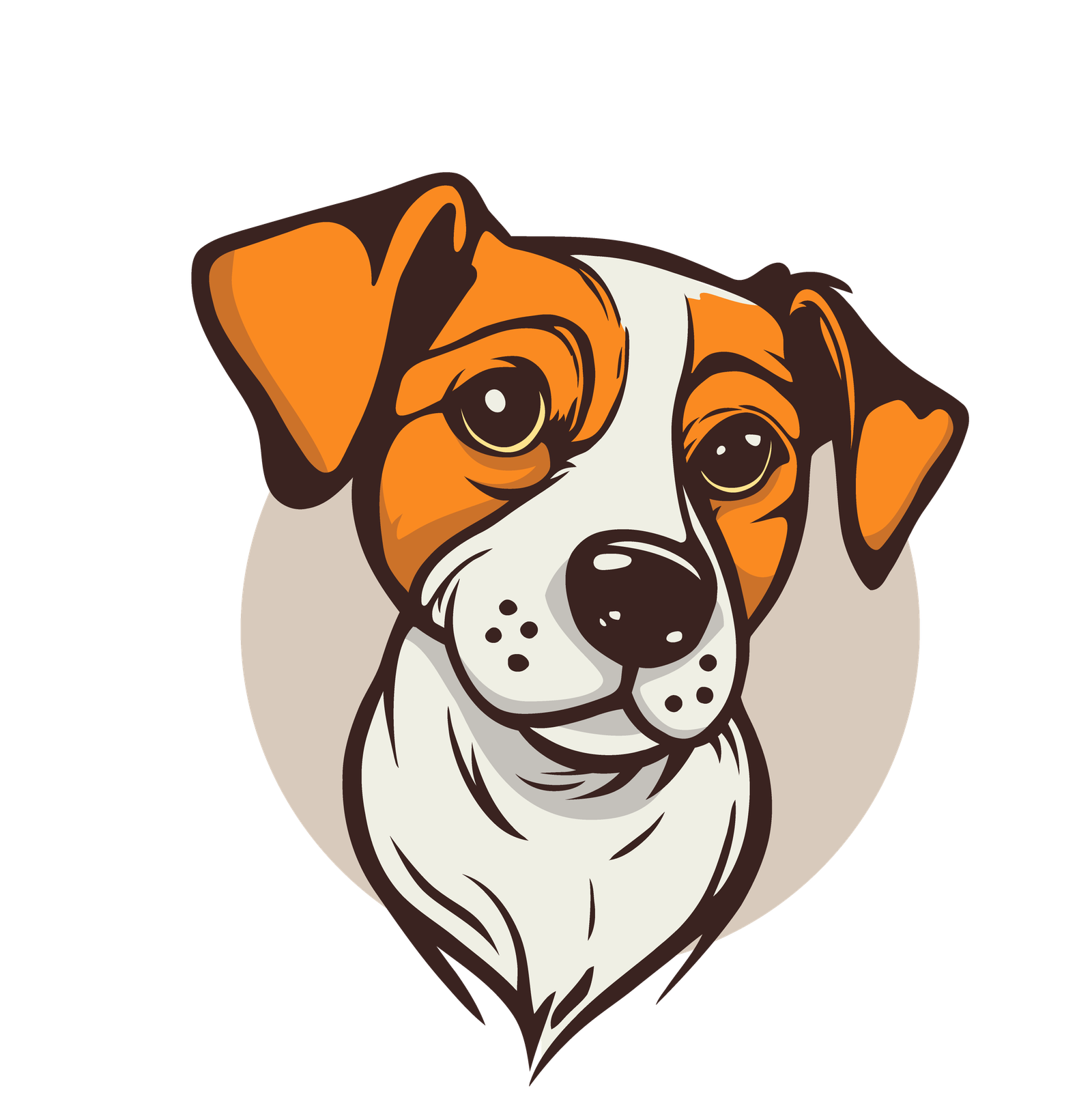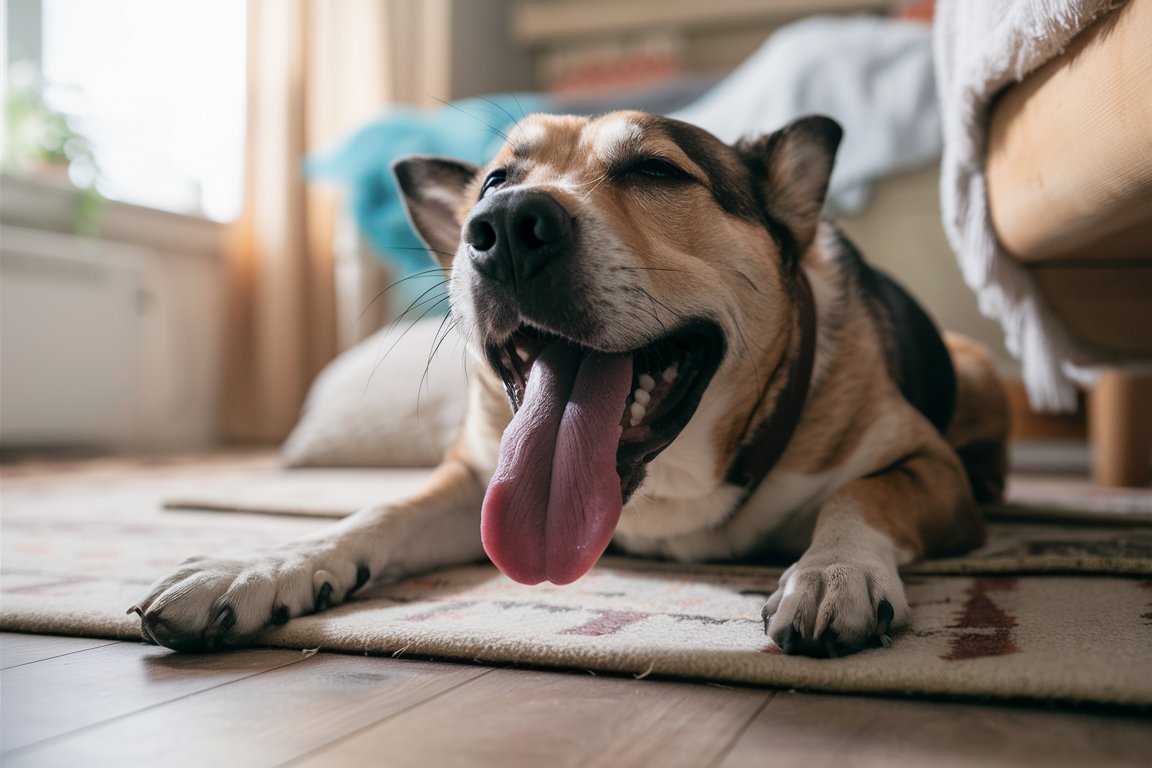Why Is My Dog Panting While Resting?
Have you ever noticed your dog panting even when they’re not running around or playing? It’s natural to wonder why this happens, especially when your furry friend is just lying down. Panting is a normal behavior in dogs, primarily to help regulate their body temperature. But when it happens while your dog is at rest, it might indicate something more than just cooling off. Let’s dive into the reasons behind this behavior and what you can do about it.
Understanding Why Dogs Pant
Panting is a dog’s primary way of cooling down. Unlike humans, who sweat through the skin to regulate body temperature, dogs have very few sweat glands, and most of them are located in their paw pads. Panting allows dogs to evaporate moisture from their tongues, nasal passages, and the lining of their lungs, helping them stay cool.
Normal Panting vs. Concerning Panting
It’s crucial to distinguish between normal panting and something that might require attention. Normal panting typically occurs after exercise, excitement, or during hot weather. It’s usually rhythmic, with your dog’s tongue hanging out and a steady breathing pattern.
However, excessive panting—panting that is more intense, lasts longer, or happens when your dog is at rest—could signal an underlying issue.
Common Reasons for Panting While Resting
1. Heatstroke
Even when resting, dogs can overheat, especially if they’re in a warm environment. Heatstroke is a serious condition that can occur if your dog’s body temperature rises too high. Symptoms of heatstroke include heavy panting, drooling, lethargy, and even vomiting. If you suspect your dog is overheating, it’s essential to act quickly by moving them to a cooler place, offering water, and contacting your vet immediately.
2. Stress or Anxiety
Dogs may also pant when they are stressed, anxious, or afraid. This type of panting is often accompanied by other signs of anxiety such as pacing, whining, or trembling. Stress could be triggered by various factors, including loud noises, separation anxiety, or unfamiliar environments. If your dog seems to be panting out of stress, try to identify the cause and provide comfort. You might also consider dog anxiety products like calming sprays or anxiety vests.
3. Pain or Discomfort
Pain can be another reason your dog is panting while at rest. Dogs might not always show obvious signs of pain, so panting can be one of the few indicators. If your dog is panting excessively and you can’t pinpoint a reason, it might be worth checking for other symptoms like limping, restlessness, or a change in behavior. In these cases, a visit to the vet is recommended to rule out any medical issues.
4. Heart Problems
Heart disease can also cause your dog to pant more than usual. When a dog’s heart isn’t working efficiently, it might not pump blood as effectively, leading to breathing difficulties. Other signs of heart issues can include coughing, lethargy, and weakness. If your dog is experiencing these symptoms along with panting, it’s critical to seek veterinary care promptly.
5. Cushing’s Disease
Cushing’s disease is a condition where the body produces too much cortisol, a hormone involved in the stress response. This excess cortisol can cause increased panting, along with other symptoms like increased thirst, urination, and appetite. Cushing’s disease is more common in older dogs, and a vet can diagnose it with blood tests and other diagnostic tools.
6. Obesity
Overweight dogs are more likely to pant even when they’re not active because their bodies have to work harder to move and cool down. If your dog is panting a lot while resting and is also carrying extra weight, it might be time to consider a weight management plan. Regular exercise, a balanced diet, and portion control can help reduce panting related to obesity.
7. Respiratory Issues
Dogs with respiratory problems may also pant more, as their bodies struggle to get enough oxygen. Brachycephalic breeds (those with short noses like Bulldogs and Pugs) are especially prone to panting due to their anatomy, which makes breathing more difficult. If your dog has a respiratory condition, it’s important to monitor their panting closely and consult your vet if it worsens.
What to Do If Your Dog Is Panting While Resting
Now that we’ve covered the possible reasons for panting at rest, let’s talk about what you can do.
Step 1: Observe and Assess
The first step is to observe your dog’s behavior. Is the panting accompanied by other symptoms like drooling, lethargy, or restlessness? Is it happening frequently or just occasionally? Take note of when the panting occurs and any triggers you might identify.
Step 2: Check the Environment
Ensure your dog is in a comfortable, cool environment. If it’s warm, provide access to water and shade. Sometimes, simple adjustments like turning on a fan or moving to a cooler room can make a big difference.
Step 3: Comfort Your Dog
If your dog seems anxious or stressed, try to comfort them. This could involve petting, offering a favorite toy, or playing calming music. There are also products like calming treats that can help reduce anxiety.
Step 4: Monitor Their Health
Keep an eye on your dog’s overall health. If the panting is persistent or you notice other concerning symptoms, it’s time to contact your vet. Regular check-ups can help catch potential health issues early.
Step 5: Visit the Vet
If your dog’s panting seems excessive, or you can’t identify a cause, a trip to the vet is a good idea. The vet can run tests to determine if there’s an underlying condition that needs to be addressed.
When to Be Concerned
While panting is usually normal, certain situations warrant immediate attention. If your dog is panting heavily and you notice any of the following, seek veterinary care right away:
- Difficulty breathing
- Blue or pale gums
- Collapse or weakness
- Vomiting or diarrhea
- Unresponsiveness
These could be signs of a medical emergency, such as heatstroke, a severe allergic reaction, or a heart problem.
Conclusion
Panting while resting can be a normal part of your dog’s behavior, but it can also signal something more serious. By understanding the reasons behind it and knowing when to take action, you can help ensure your furry friend stays happy and healthy. Remember, your vet is your best resource when it comes to your dog’s health, so don’t hesitate to reach out if you’re ever unsure.
If your dog is panting more than usual, it might be worth considering a check-up, especially if they’re older or have a history of health issues. Taking care of your dog’s health is a vital part of being a responsible pet owner, and by staying informed, you can make the best decisions for your beloved companion.

